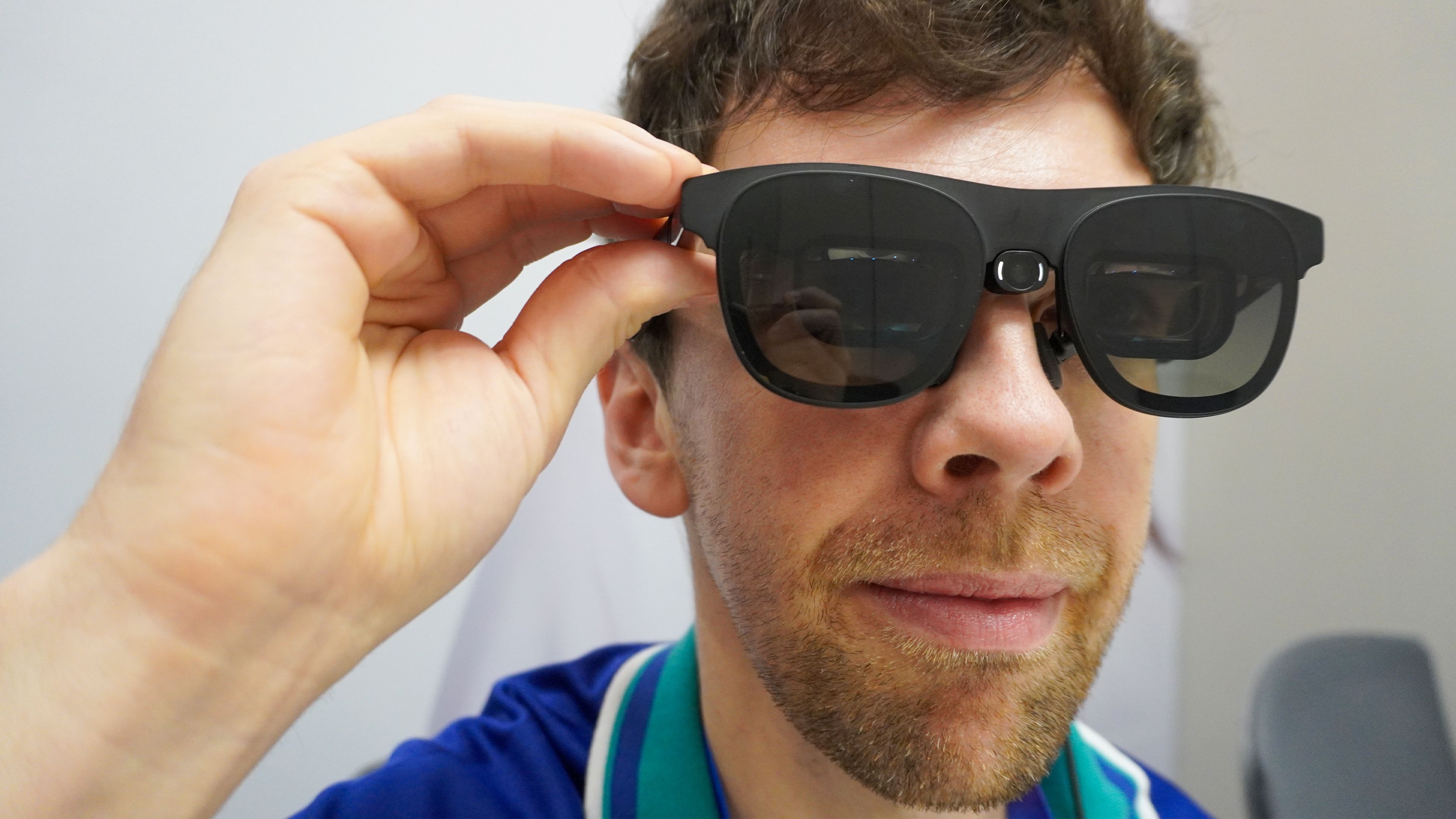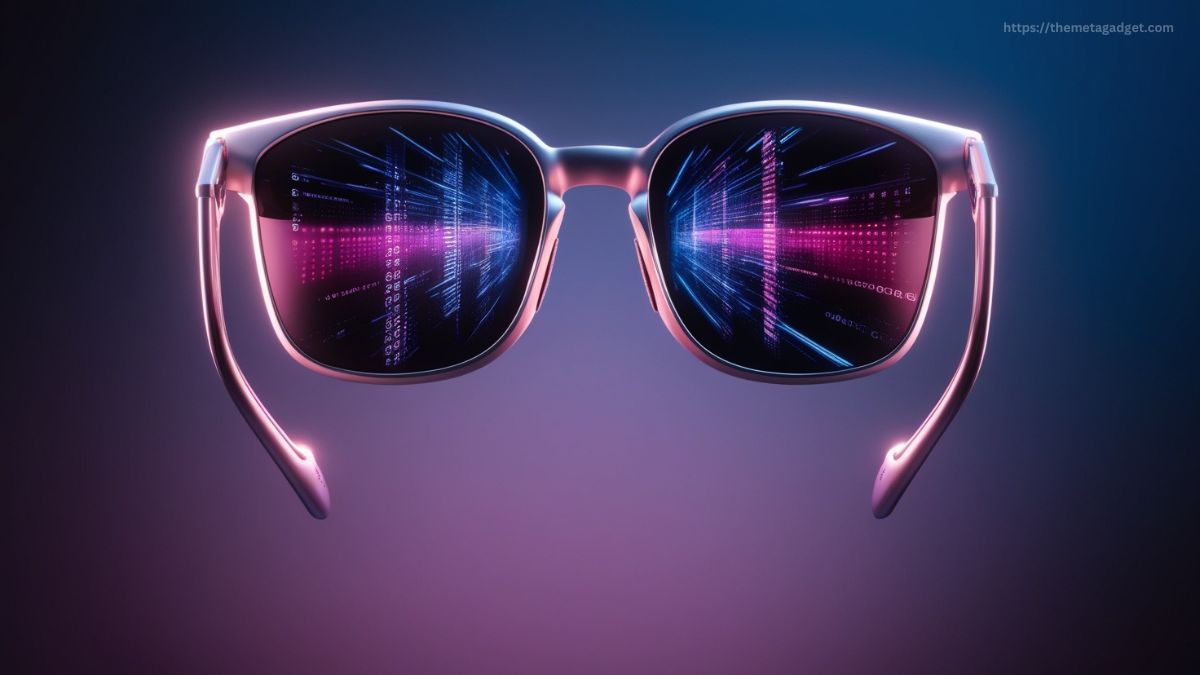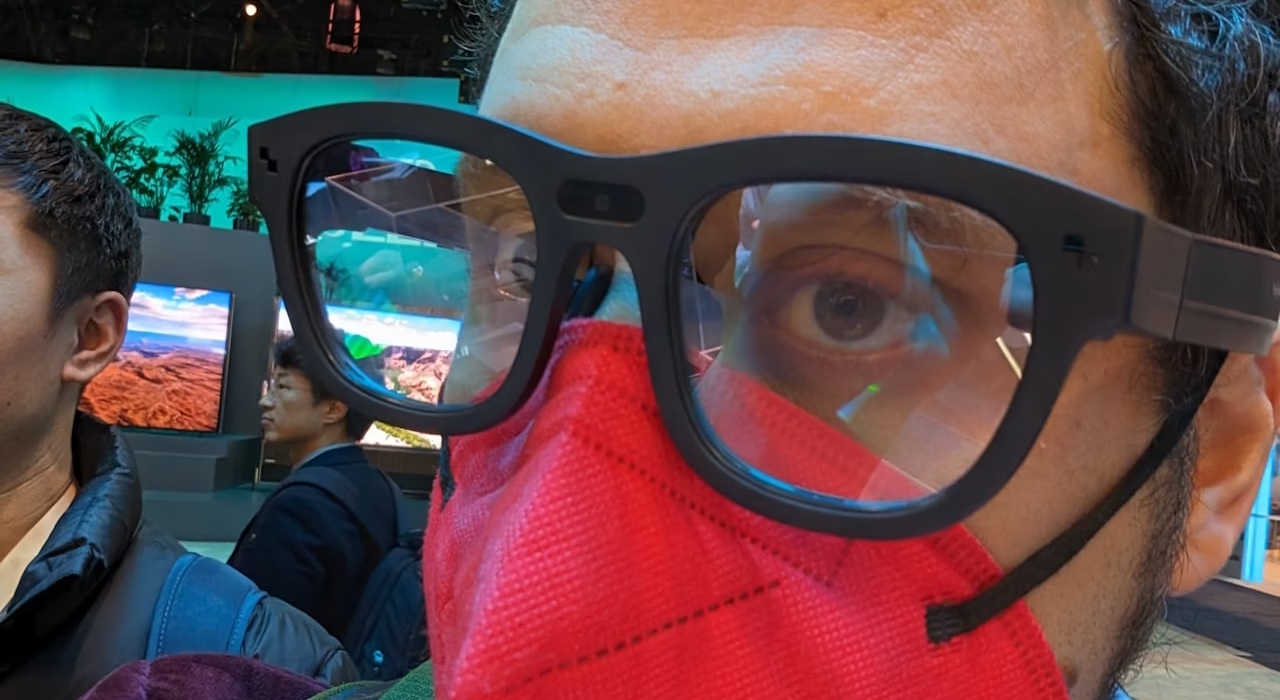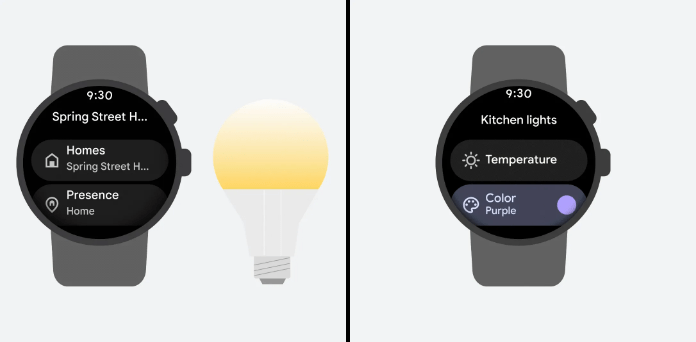Revolutionary AR-Powered Wearables: Exploring the Best Smart Glasses, AI-Driven Tech, and Beyond
Estimated reading time: 9 minutes
Key Takeaways
- Game-changing AR wearables are here, blending digital info seamlessly with our physical view and opening doors in countless areas.
- AI is the superpower behind AR, making these devices smarter with personalized experiences, instant translation, and intuitive gesture controls.
- Some of the standout smart glasses in 2024 include the stylish Ray-Ban Meta (everyday AI & social), the XReal Air 2 Pro (killer for entertainment), and the productivity-focused MLVision M5.
- Keep an eye on smart contact lenses – they’re the potential next big leap, aiming for invisible health tracking and info displays.
- Wearable heads-up displays (HUDs) provide hands-free data overlays, essential for industries like automotive, aviation, and manufacturing.
- Picking the right AR wearable boils down to your personal needs – think about budget, how comfy it needs to be, and what you’ll mainly use it for (daily help, gaming marathons, or serious work).
- The future looks bright (and tiny!), with trends pointing towards even smaller devices, huge potential in healthcare, and ongoing important conversations about privacy and ethics.
Table of Contents
- Getting Started: Why AR Wearables Are a Big Deal
- Section 1: Okay, But What *Are* AR-Powered Wearables, Really?
- Section 2: Meet the Stars: 2024’s Best Smart Glasses
- Section 3: Peeking into the Future: Smart Contact Lenses
- Section 4: More Than Glasses: Wearable Heads-Up Displays (HUDs)
- Section 5: The Magic Ingredient: How AI Supercharges AR Wearables
- Section 6: Finding Your Fit: A Practical Buyer’s Guide to AR Wearables
- Section 7: What’s Next? The Exciting Future of AR Wearables
- Got Questions? We’ve Got Answers (FAQ)
Getting Started: Why AR Wearables Are a Big Deal
Remember when smartphones felt like science fiction? Well, we’re standing at the threshold of another technological leap, and this time, it’s integrating right into our line of sight. These aren’t just gadgets; revolutionary AR-powered wearables are fundamentally changing how we interact with the digital world and the physical one simultaneously. We’ve journeyed light-years beyond basic step counters. Today’s devices can overlay useful information, entertainment, and communication tools onto our view of reality, creating possibilities that were once just futuristic dreams. As PR Newswire highlights, these advancements are reshaping the wearable tech landscape, using artificial intelligence to make interactions feel incredibly intuitive and smart. If you’re curious about how we got here, our overview on the Latest Innovations in Wearable Tech offers a great backdrop.

Get ready to explore the fascinating world of augmented reality wearables. In this post, we’ll dive into the specific devices making waves right now, unpack the vital role AI plays in making these experiences genuinely ‘augmented’, and cast our eyes toward the horizon to see what’s coming next in this rapidly evolving field. Let’s jump in!
Section 1: Okay, But What *Are* AR-Powered Wearables, Really?
So, what’s the core idea behind these AR-powered wearables? Think of them as devices you wear – typically glasses, but sometimes headsets or even contact lenses – that cleverly overlay digital elements onto your real-world view. This isn’t about blocking out reality like Virtual Reality (VR); it’s about *enhancing* it. Imagine seeing navigation arrows floating on the road ahead, checking notifications without glancing at your phone, or having instructions appear right beside the object you’re working on. It’s like having a helpful digital layer painted over the world.
To achieve this magic, these wearables rely on some pretty sophisticated tech:
- Spatial Mapping: This is how the device “understands” the physical space around you – walls, furniture, obstacles. It creates a digital map so overlays can be placed realistically, maybe pinning a virtual sticky note to your actual fridge door.
- Object Recognition: This lets the device identify specific things in your view. Point your AR glasses at a plant, and they might pull up its species and care instructions. Look at a foreign sign, and they could translate it on the spot.
- Sensors Galore: Cameras, accelerometers, gyroscopes, sometimes even eye-tracking sensors, all work together to figure out where you are, where you’re looking, and how you’re moving.

The goal? To create experiences that feel natural and deeply integrated. That car engine repair example is a classic industrial case, but think broader: seeing customer reviews hover over products in a store, getting real-time stats during your run overlaid in your vision, or even having a virtual pet follow you around your living room.
Key advancements making these devices truly revolutionary include:
- AI-driven augmented reality: This is where things get *really* smart. AI algorithms learn your habits, understand the context of your situation, and personalize the information shown. Take the MLVision M5 glasses – they can automatically adjust screen brightness if you walk outside or simplify the display if you’re driving. Similarly, safety platforms mentioned by Slate Safety use AI to anticipate worker needs or potential hazards in demanding job sites.
- Real-time translation: Imagine traveling abroad and having foreign menus or street signs instantly translated right before your eyes. Devices like the MLVision M5 promise this kind of seamless communication bridge.
Don’t just picture AR wearables as a passive screen; think of them as an evolution of the smartphone, woven directly into your perception – smarter, more aware, and ultimately, more helpful.
Section 2: Meet the Stars: 2024’s Best Smart Glasses
The market for the best smart glasses is buzzing with innovation. Manufacturers are trying to crack the code: blend everyday style people actually want to wear, make them comfortable enough for hours, and pack in powerful, useful AI-driven augmented reality features without making you look like a cyborg (unless that’s your goal!). Let’s look at some of the top players making headlines in 2024:
Ray-Ban Meta Smart Glasses: Style Meets Smarts
- The Vibe: If looking good is non-negotiable, these are hard to beat. Leveraging Ray-Ban’s iconic design language (think classic Wayfarer and the chic Headliner styles), they manage to pack tech into frames that largely pass for regular, stylish sunglasses or eyeglasses.
- AI Smarts: Powered by Meta AI, you can ask questions (“Hey Meta, what’s the name of this building?”), get real-time translations of text you’re looking at, and control music or calls with your voice. It’s like having a helpful assistant whispering in your ear (or, TBF – displayed subtly).
- Capture the Moment: A surprisingly decent 12MP ultra-wide camera lets you snap photos and record videos from your perspective, hands-free. Big plus? You can even livestream directly to Facebook and Instagram, making them appealing for social media creators.
- Who Loves Them? People prioritizing style, casual AI assistance, and easy social sharing.
- Noted By: Frequently reviewed on major tech sites like TechRadar.

XReal Air 2 Pro: Your Personal Big Screen
- The Big Picture: These glasses essentially project a massive virtual screen (equivalent to maybe 130 inches or more, depending on perception) right in front of your eyes, with sharp 1080p resolution for each eye. It feels like having a private cinema.
- Killer Feature: The electrochromic dimming is a game-changer. With the press of a button, you can dim the lenses (like transitions lenses, but instant and controllable) to make the virtual screen pop, even in bright daylight, or keep them transparent to stay aware of your surroundings.
- Featherweight Champ: Weighing only around 72 grams, they’re remarkably light and comfortable for binge-watching sessions or long gaming stints. You might forget you’re wearing them (almost!).
- Ideal Users: Gamers wanting a bigger screen experience on the go (compatible with Steam Deck, ROG Ally, etc.), movie buffs, and anyone who wants a portable monitor replacement for compatible phones or laptops (via USB-C DisplayPort).
- See it in Action: Check out reviews like this YouTube Review for a visual deep-dive.

MLVision M5: Productivity Powerhouse
- Unique Approach: Billed as the world’s lightest AI-powered AR *clip-on* glasses (a mere 38g!), the M5 attach to your existing prescription eyewear. This is a huge deal for people who need corrective lenses.
- Eye-Friendly Display: It uses a green-light micro-LED display. Why green? The company claims it significantly reduces eye strain during extended use compared to the blue light emitted by many other displays.
- Built for Business (and Beyond): This device is loaded with tools aimed at boosting productivity: scan documents just by looking at them, get highly accurate real-time translations (reportedly supporting numerous languages), and navigate menus using intuitive hand gestures.
- Target Audience: Professionals who need quick access to information, frequent travelers needing translation, or anyone looking for advanced accessibility features in a lightweight package.
- Source: Officially announced and detailed via PR Newswire.

Quick Comparison: Side-by-Side
| Feature | Ray-Ban Meta | XReal Air 2 Pro | MLVision M5 |
|---|---|---|---|
| Primary Focus | Style, Social, Everyday AI | Entertainment (Gaming/Movies), Portable Display | Productivity, Translation, Clip-on Convenience |
| Weight (Approx.) | ~50g (Varies by style) | ~72g | ~38g (Clip-on) |
| Battery Life (Approx.) | Up to 4 hours (glasses); Case adds ~8 charges | Powered by connected device (drains host battery) | Up to 5 hours |
| Requires Connection? | Needs phone for most features, operates standalone for basic camera/audio | Requires USB-C DP or HDMI (w/ adapter) connection | Likely needs phone connection for full AI processing |
| Price (Approx. MSRP) | Starts at $299 | Around $449 | Listed at $1,199 |
| Best Use Case | Social media users, fashion-conscious tech adopters, casual hands-free tasks | Gamers, movie watchers, mobile productivity seeking a large virtual screen | Professionals needing translation/docs, prescription glasses wearers |
Choosing between these depends heavily on what you value most: Is it looking good while staying connected? Getting lost in a movie? Or boosting your work efficiency on the go? Each offers a distinct flavor of the AR future.
Section 3: Peeking into the Future: Smart Contact Lenses
Okay, glasses are cool, but what if the tech could become completely invisible? That’s the tantalizing promise of smart contact lenses. Imagine augmented reality information appearing subtly within your vision, no bulky headset or even glasses required. It sounds like pure sci-fi, but companies have been working hard on making it a reality. Mojo Vision, for example, made significant waves with prototypes demonstrating incredible potential, even though they’ve since pivoted their focus.
So, what could these futuristic lenses actually do?
- Microscopic Displays: We’re talking incredibly tiny, high-resolution micro-LED displays embedded directly *into* the contact lens. These could potentially show simple, crucial information without blocking your view – think real-time speed and distance for a runner, brief text notifications, or basic navigation cues (like a subtle arrow pointing left).
- Built-in Health Monitors: Forget wristbands. Integrated biometric sensors could continuously track subtle physiological data. For people with diabetes, this might mean real-time glucose level monitoring directly from tear fluid. Monitoring intraocular pressure for glaucoma patients is another huge potential application. Others might track heart rate, hydration, or even detect early warning signs of certain conditions.
- Effortless Information Access: Picture glancing at someone and seeing their name and title appear (with permission, of course!), or looking at a product and instantly seeing pricing or nutritional info.

While the possibilities are mind-bending, let’s be real – there are some massive hurdles to overcome before smart contacts become commonplace:
- Power Struggle: How do you safely power a complex device sitting directly on your eye? Current ideas involve tiny, short-lived batteries or wireless power transfer from an external device (like a pendant or glasses frame), but neither is perfect.
- Regulatory Maze: These aren’t just gadgets; they’re medical devices, especially if they monitor health data. Expect rigorous testing cycles and approvals needed from bodies like the FDA, which takes time and significant investment.
- Data Crunching: The lens itself likely won’t do all the heavy lifting. Much of the processing and AI smarts would probably need to be offloaded wirelessly to a paired smartphone or other nearby device.
- Comfort and Safety: Ensuring the lens is breathable, comfortable for all-day wear, and doesn’t negatively impact eye health long-term is paramount.
So, when can you buy them? Don’t hold your breath for mass-market availability just yet. We’ll likely see highly specialized versions emerge first, perhaps for specific medical uses or professional applications, potentially surfacing around 2026 or later. Broader consumer adoption is probably still several years beyond that. But the research continues, and platforms like Aroona.net often track these kinds of long-term wearable tech evolutions.
Section 4: More Than Glasses: Wearable Heads-Up Displays (HUDs)
While smart glasses and contact lenses aim for subtlety and integration, there’s another category: wearable heads-up displays (HUDs). These often take a different approach. Instead of overlaying info directly onto lenses you look *through*, they typically project the digital information onto a separate, transparent screen (a “combiner”) positioned within the user’s field of view. Think of the displays fighter pilots use, or increasingly, the info projected onto car windshields.
The key advantage here is often about delivering critical, glanceable information while allowing the user to keep their hands free and their focus directed primarily on the task at hand. They might be integrated into helmets, visors, or specialized eyewear frames.

Where do HUDs shine? Here are some key application areas:
- Automotive: This is where many consumers encounter HUDs first. Modern cars increasingly offer options to project speed, navigation turns (GPS arrows that seem to float over the road), cruise control status, and safety alerts directly onto the lower part of the windshield. This means drivers can get vital info without taking their eyes off the road. Slate Safety even points to their growing role in overall vehicle safety systems.
- Aviation & Aerospace: The original HUD pioneers! Pilots rely on them to see critical flight data – airspeed, altitude, attitude (horizon line), navigation markers – overlaid onto their view out the cockpit window. Beyond flying, aerospace companies like Boeing leverage industrial AR HUDs to guide technicians through complex assembly or maintenance tasks, overlaying digital instructions and schematics directly onto the actual equipment.
- Industrial & Manufacturing: Picture a factory worker or field technician wearing a safety helmet with an integrated HUD. This display could show step-by-step assembly instructions, highlight potential hazards detected by sensors, connect them with a remote expert who sees what they see, or display real-time inventory data, all while keeping their hands free to work.
- Military & Defense: HUDs provide soldiers and pilots with crucial tactical information – enemy positions, friendly unit locations, navigation waypoints, target designation, system warnings – delivered directly into their line of sight, enhancing situational awareness and reaction times.
- Healthcare: Surgeons are exploring AR HUDs that can overlay patient vital signs, pre-operative scans (like MRI or CT images), or navigation guides directly onto their view of the patient during surgery, potentially improving precision and outcomes.
- Sports & Performance: High-end cycling glasses or running visors can incorporate HUDs showing performance metrics like speed, heart rate, power output, and distance covered without requiring the athlete to look down at a watch or bike computer.
Unlike smart glasses often designed for all-day, everyday wear, HUDs are frequently more specialized tools. They excel in contexts where specific, critical data needs to be instantly accessible without distracting from a primary, often hands-on, task. Their form factor might be bulkier, but the utility in these specific scenarios is undeniable.
Section 5: The Magic Ingredient: How AI Supercharges AR Wearables
Let’s talk about the engine driving the most exciting advancements in AR wearables: AI-driven augmented reality. Simply overlaying static digital information is one thing, but Artificial Intelligence is what makes these devices truly *smart*, adaptive, and genuinely useful companions rather than just fancy displays.
Think of AI as the brain behind the AR brawn. It doesn’t just passively show you things; it actively interprets the world around you, understands your context, predicts what you might need, and enables much more natural ways to interact. Here’s how AI is flexing its muscles in the AR space:

- Making Interactions Feel Natural (Gesture & Hand Tracking): Forget clunky controllers. Sophisticated AI algorithms, like those used in Microsoft’s HoloLens 2, can meticulously track the position and movement of your hands and fingers. This allows you to “grab,” “pinch,” “swipe,” and interact with virtual objects or menus using intuitive, natural gestures, as tech developers like Nomtek often explore in their work. It makes using AR feel less like operating a computer and more like interacting with the real world.
- Knowing What You Need, When You Need It (Context-Aware Interfaces): This is huge. AI enables wearables, like the MLVision M5, to understand your current situation. Are you driving? The display might simplify significantly, showing only essential navigation. Are you in a meeting? Perhaps only urgent notifications come through. Walking down a street? It might proactively identify landmarks or offer translations. This contextual intelligence prevents information overload and makes the AR helpful, not distracting.
- Breaking Down Language Barriers (Intelligent Real-time Translation): This goes way beyond basic dictionary lookups. AI powers the instant translation features in devices like the Ray-Ban Meta. It analyzes the context of sentences on a menu or understands the nuances of spoken language to provide translations that feel much more natural and conversational, rather than jarringly literal.
- Boosting Safety and Efficiency (Predictive Analytics): In professional settings, AI combined with AR is a powerhouse. On a construction site, AI could analyze sensor data and use the AR display to warn a worker about an unseen hazard around a corner. In a factory, it might predict potential machinery failure based on subtle visual cues or sensor readings highlighted via the AR overlay, allowing for preventative maintenance.
- Making it *Your* Experience (Personalization): Like any good AI, the systems in AR wearables can learn your preferences, habits, and routines over time. It might start proactively offering shortcuts to apps you frequently use in certain locations, suggest relevant information based on your calendar appointments, or tailor restaurant recommendations based on your past choices and current location.
- Understanding the World Visually (Object & Scene Recognition): AI is crucial for identifying objects, text, people (with privacy considerations), and the general scene you’re looking at. This capability underpins features like identifying products, translating signs, providing information about landmarks, or even helping visually impaired users navigate their surroundings.
In essence, AI transforms AR wearables from simple information displays into intelligent partners that can perceive, reason, and interact in ways that feel intuitive and powerful. Curious about broader AI trends? Articles like 10 Cutting Edge AI Technologies Shaping the Future give great context, while pieces like Powerful AI-Powered Wearables: Revolutionizing the Future of Smartwatches dive deeper into AI’s impact specifically within the wearable tech space.
Section 6: Finding Your Fit: A Practical Buyer’s Guide to AR Wearables
Alright, you’re intrigued by the possibilities, but navigating the growing market of revolutionary AR-powered wearables can feel overwhelming. How do you choose the right device for *you*? It really boils down to understanding your own priorities – what you need it to do, how much you’re willing to spend, and how you plan to use it. Let’s break down the options:

Choosing Smart Glasses
These are often the most versatile, aiming to blend tech with everyday life.
- Who should consider them? People looking for hands-free notifications, quick access to AI assistants, music playback, casual photo/video capture, or specific features like real-time translation or a portable virtual monitor.
- If Style & Social are Key: The Ray-Ban Meta (from $299) is a strong pick. It looks great, integrates Meta AI nicely for voice commands, and its camera/livestreaming features are perfect for content creators or social butterflies. Consider if: You prioritize fashion and want seamless social integration. Maybe avoid if: You need a high-res display for work or intense gaming.
- If Entertainment is Your Priority: The XReal Air 2 Pro (around $449) excels. Its large, sharp virtual screen and unique dimming feature make it ideal for watching movies on planes or playing games with যুক্ত devices like the Steam Deck. Consider if: You want a personal cinema or large gaming display. Maybe avoid if: You need standalone operation (it requires a connected device) or integrated AI assistant features.
- If Productivity is Paramount: The MLVision M5 (around $1,199) is a premium choice for professionals. Its clip-on design, eye-friendly display, advanced translation, document scanning, and gesture controls are built for getting things done. Consider if: You need powerful AR tools, wear prescription glasses, and have the budget. Maybe avoid if: You’re looking for style or entertainment focus primarily.
Considering Smart Contact Lenses
This is bleeding-edge tech, not widely available yet.
- Who should watch this space? Primarily those interested in future health monitoring (e.g., non-invasive glucose tracking) or the ultimate discreet information display. Also, early adopters fascinated by biomedical tech advancements.
- What to Expect: Initial applications will likely be highly specialized and medically focused. Pricing is unknown but likely high initially. Availability is still speculative (perhaps starting 2026+ for niche uses). (Context: Wearable Tech Evolution)
- Verdict for Now: Wait and see, unless you’re involved in research or specific medical trials.
Deciding on Wearable Heads-Up Displays
These are usually task-specific tools, often focused on hands-free operation.
- Who needs a HUD? Professionals in fields like aviation, automotive (drivers), manufacturing, logistics, military, or even specialized surgeons or athletes who need critical data overlaid without looking away or using their hands.
- For Driving: Look into built-in automotive HUDs offered by car manufacturers or reputable aftermarket units ($500–$2,000+). Focus on clarity, information displayed (speed, nav, warnings), and integration.
- For Professional/Industrial Use: Expect enterprise-grade systems often integrated into helmets or ruggedized eyewear ($3,500 and way up). These are tailored for specific jobs (e.g., showing assembly guides, schematics, remote assistance video feeds). Think solutions used by companies like Boeing or in advanced surgical suites. (See Industrial Context)
- Consider if: Hands-free operation and immediate access to specific data are critical for your job or activity. Maybe avoid if: You need something stylish, versatile for everyday tasks, or budget-friendly for casual use.
Key Questions to Ask Yourself Before Buying Any AR Wearable:
- What’s My Budget? Be realistic. Prices swing wildly from ~$300 to $3500+.
- How Important is Comfort & Appearance? Will you wear it for 30 minutes or 8 hours? Does it need to look like regular glasses, or is function over form acceptable? Consider weight!
- What’s the MAIN Thing I Want to Do With It? Gaming? Watching movies? Replying to messages? Translating languages? Following work instructions? Be specific – this heavily guides your choice.
- What’s the Real-World Battery Life Like? Manufacturer claims are often optimistic. Look for reviews testing typical usage patterns relevant to you.
- Is it Compatible With My Gear? Does it need an iPhone? An Android phone with specific features (like USB-C DisplayPort)? A powerful PC? Check the requirements carefully.
- Can I Try Before I Buy? For expensive devices, hands-on demos (if possible) are invaluable to assess fit, display quality, and overall feel.
Doing a little homework upfront can save you from buying a cool piece of tech that ultimately doesn’t fit your lifestyle or needs. For more gadget ideas in the wider wearable world, lists like The 10 Coolest Wearable Tech Gadgets can offer inspiration.
Section 7: What’s Next? The Exciting Future of AR Wearables
The journey of revolutionary AR-powered wearables is far from over; in many ways, it’s just beginning. Looking ahead, we can expect the pace of innovation to accelerate, leading to devices that are even more powerful, intuitive, and seamlessly integrated into our daily routines. Here’s a glimpse of what the future likely holds:

- The Shrinking Act (Continued Miniaturization): The relentless drive to make tech smaller and lighter will absolutely continue. Think AR components becoming so efficient and tiny they can fit comfortably into frames indistinguishable from regular eyeglasses, or potentially reach the ultimate goal of robust smart contact lenses. Making AR invisible is a key goal for mass adoption.
- Healthcare Revolution: This is potentially one of the most impactful areas. Imagine smart contacts continuously monitoring glucose levels for diabetics or eye pressure for glaucoma patients, sending alerts to their doctor. Picture surgeons viewing real-time 3D models of a patient’s organs overlaid directly onto their view during an operation, guided by AI. Consider experienced specialists remotely guiding paramedics or rural doctors through complex procedures using AR overlays.
- Beyond Sight and Sound (Enhanced Sensory Integration): Future AR might engage more senses. We’re already seeing audio AR (think spatial sound cues), but we could see haptic feedback integrated into frames or accessories, providing tactile confirmation or alerts. Further out, perhaps even olfactory (smell) generation for truly immersive experiences (imagine smelling coffee when a virtual café notification pops up).
- Smarter, Proactive AI: AI won’t just react; it will anticipate. Expect AR systems that genuinely understand your context, predict your needs based on your schedule, location, and past behavior, and proactively offer relevant information or assistance before you even ask. “Your next meeting is across town, traffic is heavy, you should leave in 5 minutes.”
- Navigating the Ethics Minefield (Privacy & Societal Impact): As these devices become more capable (especially regarding recording capabilities), the tough conversations will ramp up. How do we handle privacy for bystanders potentially being recorded? How is the immense amount of collected personal and environmental data secured and used? What about the potential for misuse (e.g., pervasive surveillance, biased AI algorithms)? Addressing these ethical concerns, as touched upon by resources like Slate Safety in related contexts, will be crucial for societal acceptance.
- Playing Nicely Together (Interoperability): Hopefully, we’ll see greater standardization across platforms and devices. A more open ecosystem where different AR wearables, apps, and services can work together seamlessly would unlock far more potential than siloed, proprietary systems.
- Killer Apps Emerge: While specific use cases exist, the search continues for the true “killer app” that makes AR wearables indispensable for the average person, much like messaging and social media did for smartphones.
The projections are staggering – some analysts predict the AR wearables market could surge past $76 billion by 2030. This isn’t just about niche gadgets; it signals a fundamental shift towards a future where our physical reality is constantly, intelligently augmented by digital information and AI. This evolution mirrors advancements in related fields, like the increasingly immersive experiences offered by VR headsets such as the Meta Quest 3, pushing the boundaries of human-computer interaction.
Got Questions? We’ve Got Answers (FAQ)
-
- What’s the main difference between AR smart glasses and wearable HUDs?
Think of it like this: AR smart glasses usually try to look somewhat like normal glasses and overlay digital info onto the lenses you look *through*. They often pack in cameras, mics, and AI for interaction (like taking photos, asking questions). Wearable HUDs, on the other hand, typically project info onto a separate transparent screen in your view (like in a pilot’s helmet or embedded in a car windshield). HUDs are often chunkier and built for specific, hands-free tasks where seeing critical data instantly is key (think industry, military, aviation).
- What’s the main difference between AR smart glasses and wearable HUDs?
-
- Are smart contact lenses actually safe to put in my eye?
That’s the million-dollar question and a top priority for developers! Current research focuses on using biocompatible materials that are safe for the eye. However, major hurdles remain, like finding a safe way to power them without generating heat, ensuring they remain comfortable and breathable for long periods, and understanding any long-term health effects. Before any smart contact lens hits the market, especially for medical use, it will need to pass stringent safety tests and get approval from regulatory bodies like the FDA.
- Are smart contact lenses actually safe to put in my eye?
-
- How exactly does AI make AR wearables better?
AI is the secret sauce! It elevates AR from just a display to something truly intelligent. For instance, AI enables: Smarter translation (understanding context, not just words), object identification (telling you what you’re looking at), natural gesture controls (letting you interact with virtual things using your hands), contextual awareness (showing you relevant info based on where you are and what you’re doing), and personalization (learning your habits to anticipate your needs).
- How exactly does AI make AR wearables better?
-
- What are the biggest privacy worries with AR wearables?
There are several big ones. The ability for glasses to potentially record video or audio discreetly raises concerns about bystander privacy and consent. Then there’s the massive amount of personal data these devices can collect (where you go, what you look at, maybe even biometric data from future lenses) – how securely is it stored, and who gets access? Facial recognition technology possibilities and the potential for constant surveillance are also major ethical discussion points.
- What are the biggest privacy worries with AR wearables?
- If I just want something for everyday casual use, which AR glasses are best?
For blending into daily life right now, glasses like the Ray-Ban Meta Smart Glasses are often recommended. They nail the ‘normal glasses’ look better than most, offer handy voice-activated AI features for quick questions or translations, let you listen to music discreetly, and have a decent camera for hands-free photos and videos. They strike a good balance between fashion and useful, but not overwhelming, tech for casual use.
The AR revolution is well underway! What are your thoughts on these wearables? Do you own a pair, or are you waiting for the next generation? Share your questions and experiences in the comments below!





